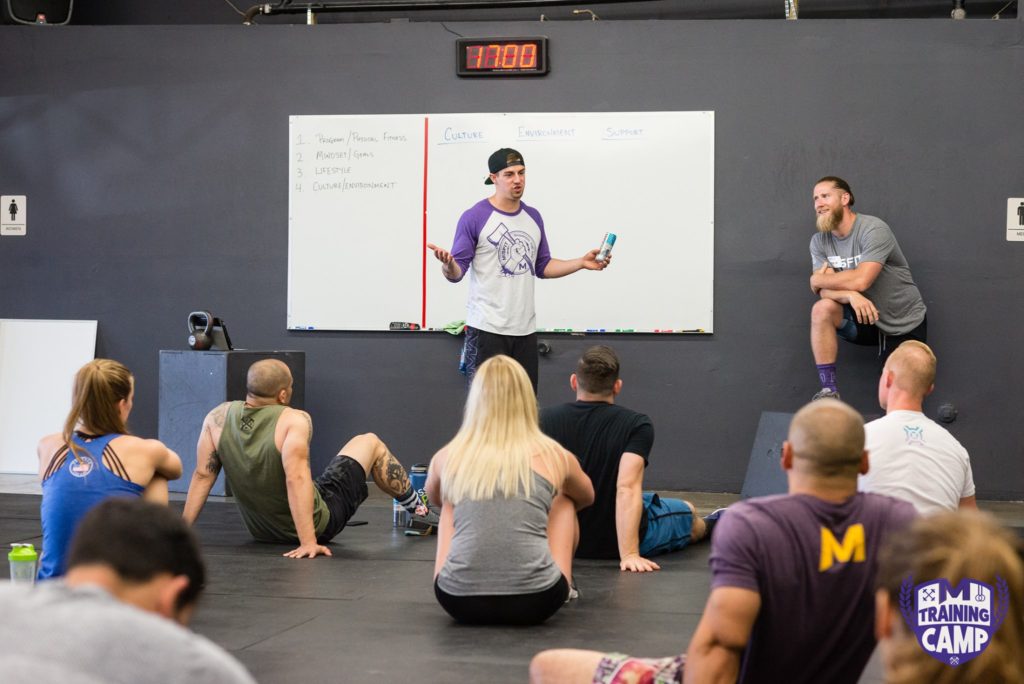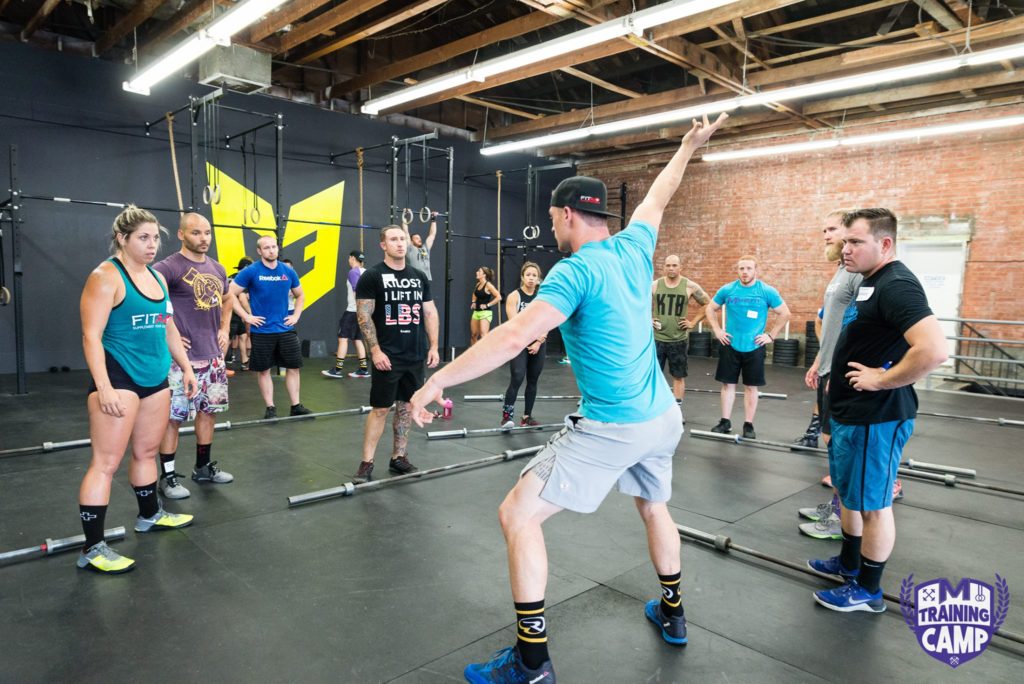Lesson Plan – Time Management

Time Management
By: Matthew Sherburne
The role of “Coach” at your affiliate is a complex, multi-faceted job. Coaches are expected to be personable, knowledgeable, empathetic, and charismatic. Another trait that is equally as important to running successful affiliate classes is time management. Both your box and your members run on specific daily schedules. When someone comes to your gym for a 6PM class and the 5PM class is still mid-workout at 6:05PM, these members feel short-changed when warm-ups are shortened and extra opportunities for coaching or skill work are missed. The schedule at your gym creates the expectation that class is X-minutes long and it is imperative that your coaches not only stick within that time frame but also fill their classes with enough quality content to make the class the best part of your members day. Now that we have established how important time management is, the next step is discussing strategies for creating an effective class.
Some of you, like me, were thrust into the role of coach, or even Head Coach, with little-to-no experience. If this describes you, you were likely starting at an unestablished affiliate that was in desperate need of a coach or you paid for your L1 and then decided to open up your own box. In this situation, through trial-and-error, you began to learn what worked and what didn’t as you gradually became a better coach. However, this isn’t 2008 anymore and nearly a decade later CrossFit gyms are now established and looking to grow and expand. Gym owners are looking to hire new, qualified candidates to coach at their box and and while you may be the most knowledgeable, charismatic and empathetic coach in the world, if you aren’t able to stick to a schedule, you will not last long.
Therefore, the purpose of this article is to provide one of many different strategies to improve your time management skill, the lesson plan.
The goal of the lesson plan is to help coaches, both inexperienced and experienced, better formulate a structured class. Organizing your thoughts and writing them down on paper serves two purposes: 1) It will help you identify what you’re teaching and the purpose behind your lesson (aka “why”) and; 2)It will improve your confidence and presence in class. Knowing your class structure and your points of emphasis in the drills and skills you’re teaching will make you appear more confident and authoritative, which will inspire your members to believe in the message you are delivering to them. Included below is a sample lesson plan for a hypothetical 60-minute affiliate class at CrossFit MF aka MisFit Athletics HQ.
The WOD
Warm Up
Thoracic Mobility
-then-
3 Rounds
15 Calorie Row
50’ Duck Walk
Lift
Snatch
3-3-3-3-3
Met-Con
45 Wall Balls 20/14lbs
9 Snatches 155/105lbs
30 Wall balls 20/14lbs
6 Snatches 155/105lbs
15 Wall Balls 20/14lbs
3 Snatches 155/105lbs
Timeline for Class
0:00 – 3:00 – Introduction
Goals: Welcome the class, Warm-Up Instruction & Warm-Up
Coach welcomes athletes to class
Coach learns of injuries, restrictions or issue that hinder athletes full participation in class
Coach briefs the mobility exercise and warm-up.
3:00-12:00
Mobility and Warm-Up
Class performs mobility and warm-up
Mobility
Partner thoracic spine stretch
Warm-Up, 3 Rounds
Row 15 Calories,
Row HARD and FAST
Duck walk
Stay low, short steps, work those hips
During your introduction to the class, keep the briefing concise and clear. Be sure to ask about any injuries/issue prior to starting then get your athletes moving. A thoracic spine stretch will help most members prior to snatching, as a high percentage of your members will have shoulder mobility restrictions that can be improved with passive or active mobility. Your goal for the warm up is to get your athlete’s blood flowing, their joints mobilized, their movement patterns improved. Warm-up need to be active to engage your athletes as well as preparing them for their class.***
12:00 – 14:00 – Break
Bathroom break, grab water, change footwear and grab other accessories
Implementing planned breaks in your class allows for smooth transitions between parts of class so that people aren’t running to use the restroom as you’re trying to start the clock for the workout.
14-19:00 – Specific Barbell Warm-Up
Goals: Introduce and Teach the lift using drills using 3-5 reps of each movement
Muscle Snatch
Teach the athlete to pull the bar up directly in front of the body while keeping the bar close to the body. Teach the active overhead position the barbell overhead.
Power Position Power Snatch
Teach hip extension, footwork and learning to pull under the bar with speed.
Power Position Squat Snatch
Teach to properly pull under the bar. Get athletes to be more comfortable in the bottom of the overhead squat.
Low Hang Squat Snatch
Teach leverage in the low hang, how it relates to tension and speed/power in the snatch. Teach the transition from 2nd pull into 3rd pull.
Full Snatch
Teach set-up position, 1st pull, 2nd, and 3rd. Work on becoming fluid throughout the movement.
The barbell warm-up is meant to be active and fast-moving. Each athlete should be given 1 cue to improve their movement. Keep the cues clear and concise, watch for improvement in their movement, and move on to another athlete.
19:00-35:00 – Snatch 3-3-3-3-3
Goals: Lift some weight!
Snatch Triples, drop and reset each rep, building to a heavy set of 3.
Over the next 20:00 the goal is to build up to a heavy set of 3 Snatches. A few sets should be considered warm-up sets prior to starting with your first working weight. Your first working set should close to 60% of your 1RM or 6/10 difficulty. A good gauge is the amount of rest you feel you need after hitting a set of 3, you should be taking :90 to 2:00 between sets for rest. Your last set of 3 should be the heaviest triple you can hit. Don’t be afraid of failure, go heavy! The Coach’s goal during this period is to give each athlete 1 direct, concise, and actionable cue to improve movement.
35:00-37:00 – Break
Bathroom break and chance to grab water
35:00-38:00 – Met-Con Instruction
Goals: Big sets of Wall balls, Fast Snatches either Touch and Go or Quick Singles.
Time Domain: 6-10 minutes
Loading: Moderate-Heavy
When selecting the appropriate weight for your athlete, they should be able to complete the Wall Ball Shots in 3,2 and 1 sets for each round of Wall Balls. The Snatches might be touch and go for your highest performers, but fast singles are also acceptable. We don’t want to see an athlete standing around looking at their bar. To perform snatches at the RX weight the athlete should have a minimum 1RM snatch of 205/140lbs. The goal for any piece is intensity, not achieving the “RX”, so scaling is imperative in a WOD such as this. There is always more than 1 way to scale any workout, but in a workout such as this I would advocate scaling the weights before scaling volume since the WOD is so short. This workout has a high demand on the shoulders and hips. Athletes with shoulder injuries can modify this workout with cleans instead of snatches. Athletes with hip issues may elect to row or bike as these place less demand on the hip but elicit a cardiovascular demand similar to wall balls. Athletes with issues in the shoulder and hip should be provided with a separate workout with a similar time domain to the class WOD.
38:00 – 53:00 -WOD is performed
Watch for technique break down and correct movement faults. The Coach’s goal during this period is to give each athlete 1 direct, concise, and actionable cue to improve movement.
53:00-60:00 – Cool Down
Clean up, collect scores & cool down
When class ends and you have a chance to reflect on how the class was executed, spend time to review what worked and what didn’t. There’s a good chance that parts of your lesson plan were smooth and well-executed, while others faltered. Learn from your mistakes, go with what works, and keep refining your craft. One way you can improve your time management is by having another coach observe your class. Write out your lesson plan, give it to a fellow coach and have them provide you with notes on how well you stuck to your lesson plan. When you think you have time management mastered, find other ways to improve your coaching skills, you can always improve how you deliver your class.



